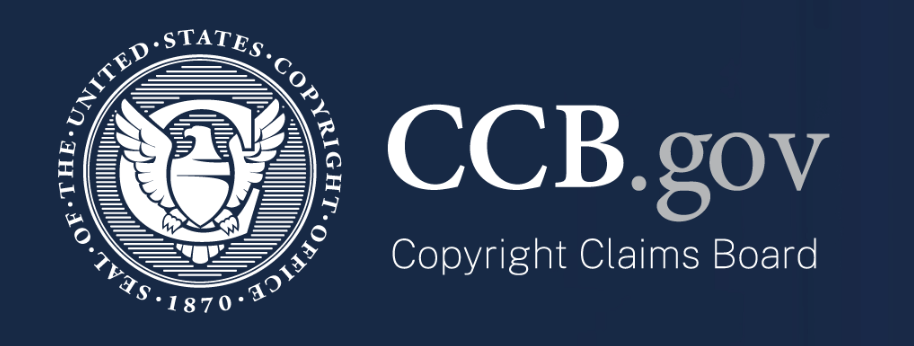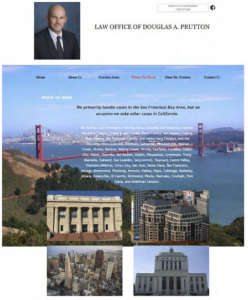
Authors Alliance members will recall the posts we’ve made over the years about the enactment and implementation of a new copyright small claims court, the “Copyright Claims Board,” housed within the U.S. Copyright Office.
Late last week, the CCB issued its very first judgment. It came in a case brought by photographer David Oppenheimer against an California attorney, David Prutton, who had used an unlicensed copy of one of Oppenheimer’s photos (a picture of the federal courthouse in Oakland) on his solo-practitioner website (h/t to Plagiarism Today, where we first saw reporting about the case, here).

The case had a head start because it was originally filed in federal district court, where the parties voluntarily agreed to dismiss the federal case and have the case referred to the CCB. You can read the entire history, including all the filings, here. The CCB ruled in favor of Oppenheimer, and awarded the photographer an award of statutory damages of $1,000, significantly less than the $30,000 (the maximum amount available to claimants in CCB proceedings) that Oppenheimer originally sought.
In many ways, this was a pretty easy case for the CCB. Prutton readily admitted that he had used Oppenheimer’s unlicensed photo, in whole, on his website. Though Prutton raised a fair use defense, he didn’t bother to argue any except one of the four fair use factors. Prutton’s sole contention was that the impact on the market was so minimal—and that Oppenheimer had shown no evidence of harm—that Prutton should win on the fourth fair use factor.
The CCB, noting that the fair use factors need to be balanced and weighed together, did its own analysis of all the fair use factors but concluded—rightly, I think—that for the other three fair use factors:
- Prutton’s use was not particularly transformative or for a new purpose, weighing against the use;
- Oppenheimer’s original photo was creative (certainly enough for copyright protection, though reasonable minds might disagree on the extent of the creativity and therefore how strong this factor should weigh in its favor), weighing against the use;
- Prutton has used the whole work, not a small portion of it, weighing against the use.
For the fourth fair use factor, Prutton argued that because Oppenheimer showed essentially no history of licensing revenue from this photograph, along with a history of other litigation that tended to indicate that Oppenheimer’s business was primarily oriented toward generating revenue through litigation, there was no meaningful market harm. The CCB disagreed, essentially concluding that it was Prutton’s job to show a lack of market harm (which they said he did not do), and the burden did not rest on Oppenheimer to show evidence of a market. However, because Oppenheimer didn’t show any actual evidence of financial harm, this also led the CCB when assessing damages to grant an award far below Oppenheimer’s request—his original demand of $30,000 in damages was reduced to just $1,000.
Where the case was a little more interesting was how the CCB addressed Prutton’s defense of “unclean hands,” in which he essentially asks the CCB to excuse his use because Oppenheimer had acted improperly. If you do a quick search for “David Oppenheimer” and “copyright” you will find that Oppenheimer is frequently in court over alleged infringement of rights in his photographs, with fact patterns very similar to the one in this case, including heavy-handed negotiation tactics and aggressive use of litigation. In several of those cases, such as this case in the Western District of North Carolina, courts refused to grant Oppenheimer easy wins—concluding that Oppenheimer’s litigation tactics could reasonably be viewed as so problematic as to block his assertion of rights by the defense of “copyright misuse.”
The CCB dismissed Prutton’s “unclean hands” defense by highlighting how unusual and extreme a plaintiff’s conduct has to be to fall subject to that general defense. The CCB didn’t, however, really assess Prutton’s more substantial “copyright misuse” defense, perhaps because Prutton didn’t raise it as a separate defense. In my view, copyright misuse may well have been a valid defense in this case.
As the Western District of North Carolina explained in a previous case brought by Oppenheimer, “misuse of copyright is a valid affirmative defense where the use of a copyright is contrary to the public policy upon which copyrights are granted. . . . Typically, the defense applies when seeking to avoid anti-competitive behavior, but it can also apply to other scenarios where a copyright owner attempts to extend the copyrights beyond their intended reach. . . . The underlying policy principles behind copyrights extend from the United States Constitution, with the relevant policy here being to promote the ‘useful arts.’” The court in that case concluded that if Oppenheimer’s “purpose in copyrighting the Copyrighted Work was to license it for use when individuals or companies need [his photo] then Plaintiff is likely not misusing his copyrights. Yet, a reasonable jury could find Plaintiff is using copyrights to derive an income from infringement suits and this issue is one of fact that the Court should not decide.”
Lessons Learned
As this is the very first decision of the CCB, I don’t think we should draw sweeping conclusions from it about how the CCB will do its work. But it is interesting to see that this first case wasn’t exactly a suit between legal amateurs—Oppenheimer is a seasoned litigant who has brought many copyright cases, and Prutton is an attorney (albeit not one who specializes in copyright). Both made significant missteps in the presentation of their cases. And so, one observation I think we can make is that while the copyright small claims system is meant to have low barriers to participation, and the CCB seems inclined to go to extra lengths to help parties understand the process and present cogent filings, the CCB is not going to excuse incomplete argumentation. At least in this case, the CCB refused to assume facts or arguments not presented by the parties. That was true both for the plaintiff and defendant: plaintiffs who make damage assertions are going to need to show evidence of actual harm in order to get awards close to their requested amounts. And defendants who raise defenses will need to fully argue them; glossing over three of the four fair use factors is not a winning strategy. Nor does it seem passing references to defenses such as “unclean hands” and “copyright misuse” will work without adequate support.
Discover more from Authors Alliance
Subscribe to get the latest posts sent to your email.
